Nepal is a landlocked country in southern Asia, between Tibet and India. It’s a land of paradoxes, where Hindus live side by side with Buddhists, and snow-capped mountains rise above the tropical plains.
Nepal has four distinct seasons: spring, summer, autumn, and winter. The climate varies depending on elevation, but in general, the lower areas are hot and humid, while the higher elevations are cold and snowy. So does it snow in Nepal?
Nepal is home to eight of the world’s ten tallest mountains, including Mount Everest, and it’s also home to some of the world’s most exotic wildlife, including Bengal tigers and one-horned rhinoceroses.
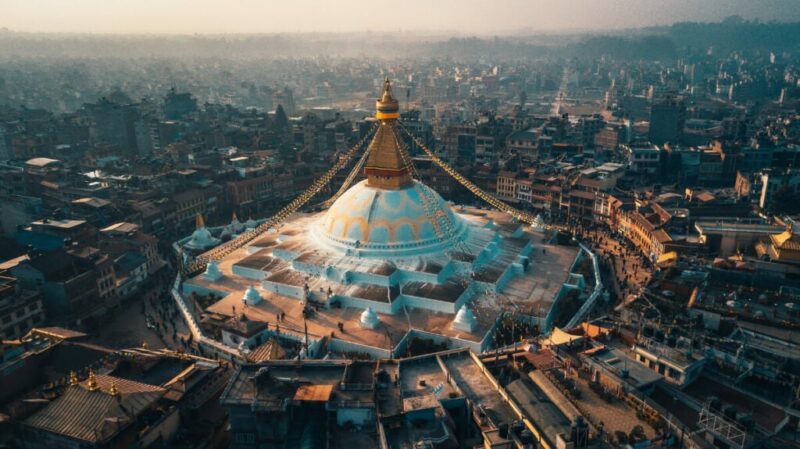
Does It Snow In Nepal?
Yes! It does snow in Nepal. In fact, Nepal experiences heavy snowfall every year in its high mountain regions, but it seldom snows at lower elevations.
The capital city of Kathmandu is located at an elevation of around 1,400 meters (4,600 feet), and it generally doesn’t snow there. However, the temperature can dip low enough for frost to form overnight occasionally.
Nepal’s highest peak, Mount Everest, is located in the Himalayas and receives significant snowfall every year. In fact, most of Nepal’s mountains are permanently covered in snow.
The Weather In Nepal
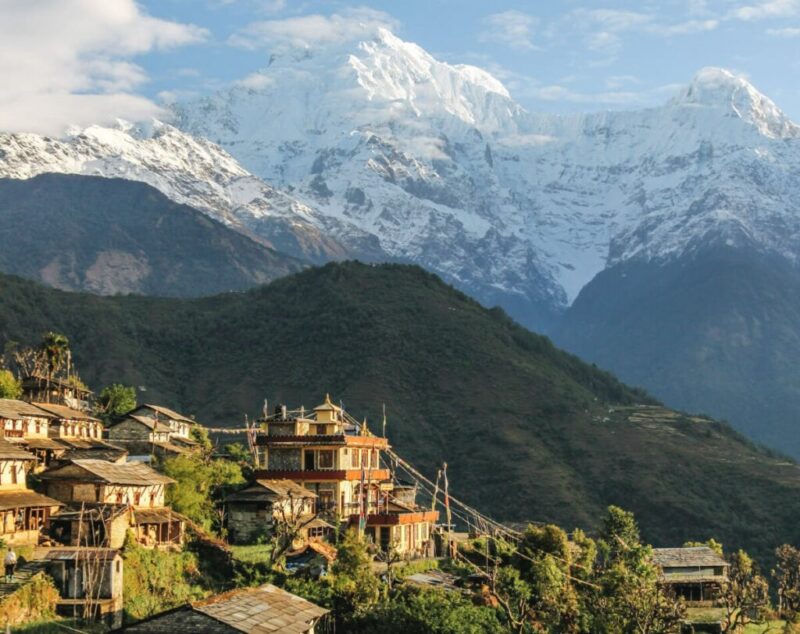
Nepal is a landlocked country in southern Asia, lying between China and India. It is a small country, about the same size as England, but with a much smaller population of around 27 million people. Nepal has a varied landscape, from the lowlands in the south to the Himalayan mountains in the north. This variety in landscape results in a variety of climate conditions throughout the country.
The south of Nepal experiences a tropical climate, with hot, humid weather and heavy rainfall during the monsoon season (June to September). In the central region of the country, around Kathmandu, the weather is more temperate, with cooler temperatures and less rainfall. And in the north of Nepal, in the Himalayan region, the climate is cold and mountainous, with very little rainfall.
Due to its location in the Himalayas, Nepal experiences some extreme weather conditions. In the summer months (June to August), temperatures can reach up to 40 degrees Celsius (104 degrees Fahrenheit) in the lowlands. And in winter (December to February), temperatures can drop as low as -15 degrees Celsius (5 degrees Fahrenheit) in some parts of the country.
One of Nepal’s most notable weather events is the monsoon season. Monsoon rains bring heavy downpours that can cause widespread flooding and damage to infrastructure. The rains usually begin in June and continue until September.
The lowland Terai region has a hot, humid tropical climate, while the higher Himalayan regions have a cold, alpine climate.
In the Kathmandu Valley, the temperature ranges from 20 to 27 degrees Celsius (68 to 80.6 degrees Fahrenheit) in winter and 23 to 35 degrees Celsius (73.4 to 95 degrees Fahrenheit) in summer.
Snowfall occurs mainly in the Himalayan region, with some flurries in the Kathmandu Valley occasionally.
Snowfall In Nepal
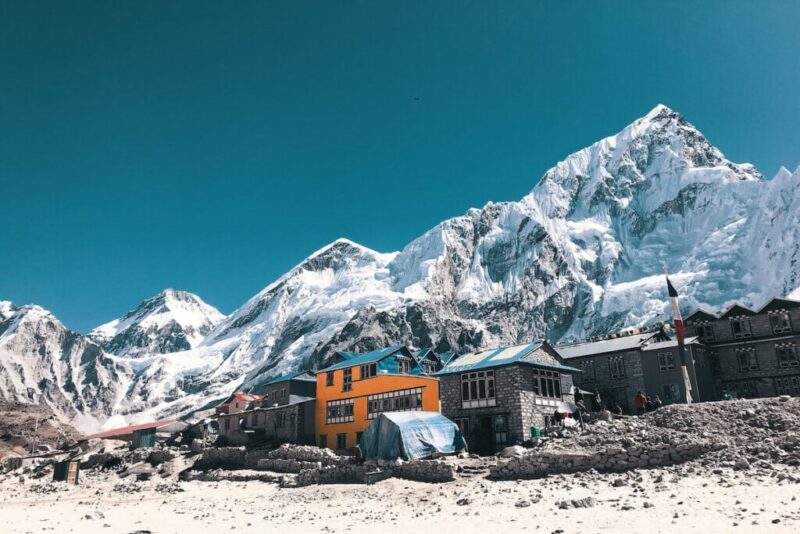
Nepal has a diverse climate, with the lower southern plains generally hotter and wetter than the northern parts of the country. The Himalayan region is naturally cold because of its altitude, but it experiences large variations in temperature depending on whether it’s in the sun or shade.
In general, snowfall in Nepal starts in mid-November and continues until early March. The highest mountains may have snow all year round, but lower areas usually have a brief period when snowfall stops – this is known as the ‘break-monsoon’ period and usually lasts from late February until early April.
Where you are in Nepal also affects when it snows. The central hills tend to get snow earlier than other parts of the country – sometimes as early as October – while areas further north may not see snow until December or even later.
Snowfall is also heavier in certain places than in others: for example, Annapurna Base Camp generally sees about 2m (6.5 ft) of snow each year, while Everest Base Camp only gets around 1m (3 ft).
Does It Snow In Nepal In December?
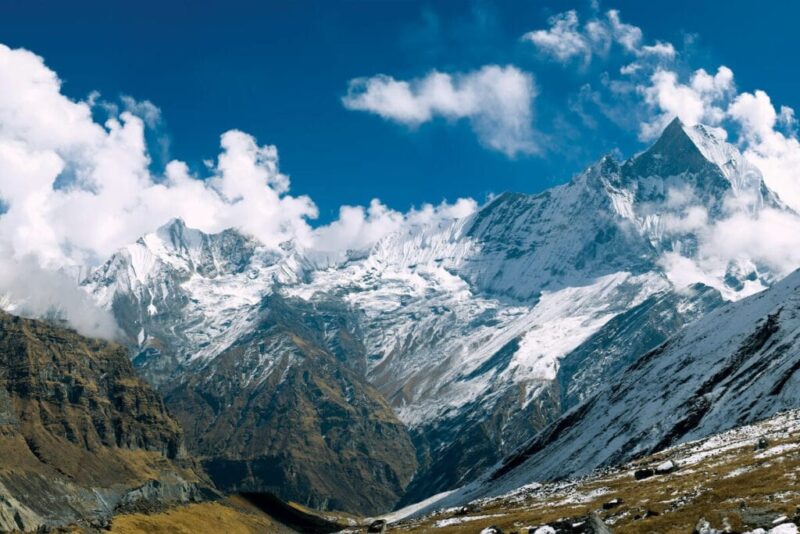
In December, the weather in Nepal is cold, and the possibility of snowfall is high. The higher altitudes are particularly vulnerable to snowfall, so if you’re planning on trekking in Nepal during this month, be sure to bring appropriate clothing and gear.
Does It Snow In Pokhara In Nepal?
Although it is not common, it can snow in Pokhara, Nepal. The Himalayan Mountain range that towers over Pokhara protect the city from the cold winds that often bring snow to other parts of the country. However, Pokhara is located high enough that when cold air does reach the city, it can sometimes cause snowfall.
If you’re hoping to see snow while you’re in Pokhara, the best time to visit is between December and February. This is also the peak season for tourism in Nepal, so be sure to book your accommodations well in advance. Keep in mind that even if it doesn’t snow while you’re visiting Pokhara, there are still plenty of other reasons to explore this beautiful city.
The Impacts Of Snowfall In Nepal
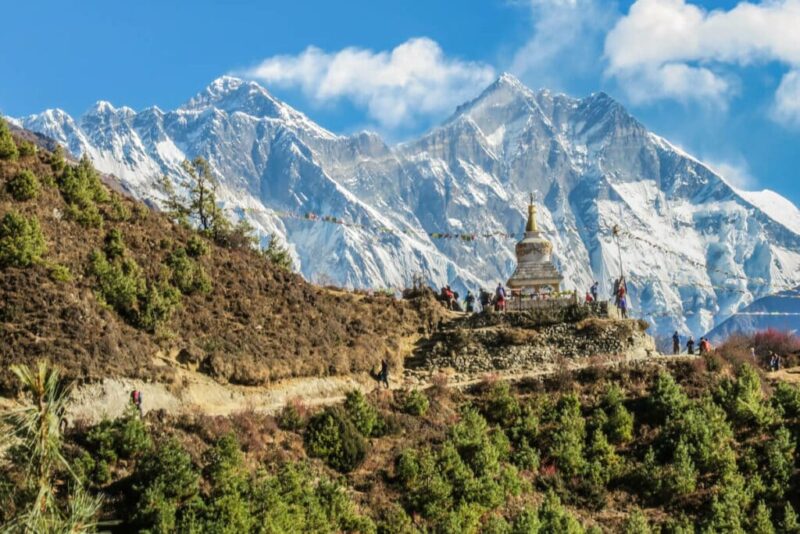
The impacts of snowfall in Nepal are both significant and wide-ranging. While the economic benefits of snowfall are widely known, the full extent of its impact is often under-appreciated. Snowfall provides vital water resources for crops and livestock, helps to regulate local climates, and supports a thriving tourism industry. In addition, snowfall also provides many opportunities for recreation and adventure.
However, snowfall can also have negative impacts, causing flooding and landslides. It can also disrupt transportation and communication networks. As a result, it is important to be aware of both the potential risks and rewards of snowfall before making any decisions about travel or activities in Nepal.
Top Snow Activities In Nepal
Nepal is a mountainous country that experiences significant snowfall each winter. This makes it a great destination for winter sports lovers and adventure seekers. There are many ski resorts and adventure parks dotted around the country, so there’s something for everyone.
Here are some of the top snow activities in Nepal:
Skiing And Snowboarding
Nepal is home to some of the world’s best skiing and snowboarding terrain. There are many ski resorts scattered around the country, so you’re sure to find one that suits your level and style.
Dog Sledding
If you’ve ever wanted to try dog sledding, Nepal is the place to do it! You can find dog sledding tours at many of the country’s ski resorts. It’s a great way to explore the beautiful scenery while getting some exercise.
Snowmobiling
Snowmobiling is another popular activity in Nepal. You can find tours at most of the country’s ski resorts. It’s a great way to see the sights and get a little adrenaline rush at the same time!
Snowshoeing
If you want to take things at a slower pace, snowshoeing is a great option. It’s a peaceful way to enjoy the snowy scenery while getting some exercise. You can find guided snowshoeing tours at many of Nepal’s ski resorts and adventure parks.
Conclusion
In conclusion, Does it Snow in Nepal? The answer is Yes! It does snow in Nepal.
Nepal in winter is a magical place, with mountains blanketed in snow and frozen lakes dotting the highlands. Travelers come from all over the world to experience the peace and beauty of a Nepal winter and to partake in some of the best winter sports in the world.
Whether you’re looking to conquer one of Nepal’s tallest peaks, go for a peaceful hike through the snow, or just enjoy some quality time in a cozy lodge, this guide will help you make the most of your Nepal winter vacation.
FAQs: Snow In Nepal
Nepal is home to some of the world’s tallest mountains, and it’s no surprise that people often wonder if it snows there. The answer is yes – snow is a regular occurrence in Nepal, particularly in higher altitude areas.
Here are some answers to some frequently asked questions about snow in Nepal:
How Often Does It Snow In Nepal?
It varies depending on the location, but snowfall is common in Nepal, especially in the mountains. In general, snowfall tends to be more common between December and February.
Is Snow Common Everywhere In Nepal?
No – it really depends on the altitude. For example, Snowfall is much more common in the mountains than it is in Kathmandu (which is at a lower altitude).
What Are The Best Places To See Snow In Nepal?
The best places to see snow in Nepal are generally at higher altitudes, such as in the Everest region or on Annapurna.
Is It Cold Enough To Ski In Nepal?
It can be – again, it depends on the location. Some of the popular places to ski in Nepal include The Last Resort and Nirvana Snow Park.
When Is The Best Time To Go If You Want To See The Snow?
The best time to see snow in Nepal is generally between December and February.
Related Posts:
- Does It Snow In Brazil? Soccer in Snow Boots?
- Does It Snow In San Antonio? Snow-Covered River Walk?
- Does It Snow In Philadelphia? From Liberty Bells to…
- Does It Snow In Massachusetts? Harvard Yard Under Snow
- Does It Snow In Croatia? Snow-Kissed Adriatic?
- Does It Snow In Salem, Oregon? From Bewitching Rain…







